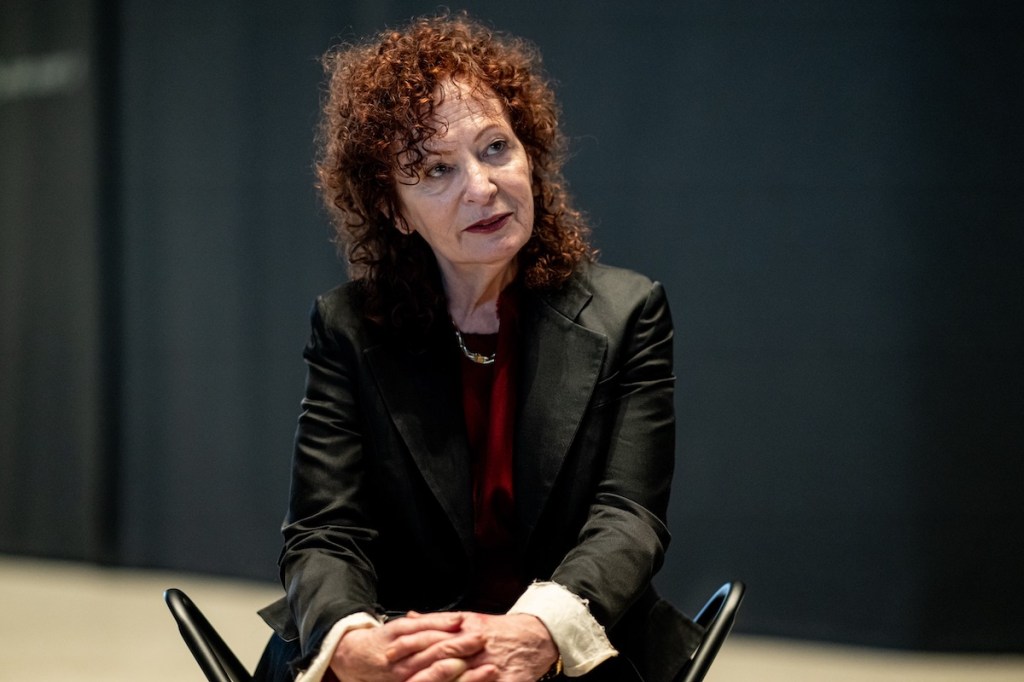Since 1874, the American Museum of Natural History has been slowly growing its footprint in Theodore Roosevelt Park on New York’s Upper West Side. This week, the beloved institution opens its latest expansion, the $465 million Richard Gilder Center for Science, Education, and Innovation, which is designed to serve as a unifying force for a four-block campus built piecemeal over nearly 150 years.
“This building beckons to you from the street, to explore landscapes of discovery—and to do so, for the first time, without running into any dead ends,” Ellen Futter, who retired in March after nearly 30 years as the museum’s president, said at the press preview for the new space, which she hopes will serve as an “antidote to misinformation and science denial.” (The unveiling also featured remarks by her successor, Sean Decatur, formerly head of Ohio’s Kenyon College.)
The new center, on the western side of the park, helps link together the patchwork of more than 25 existing buildings that make up the museum, creating 33 much-needed points of connection to other halls and galleries in 10 different buildings. It will transform the visitor experience by improving circulation through the sprawling space, adding 190,000 square feet of new construction and repurposing another 40,000.
“We have a philosophy here which is a quote from Lord of the Rings: ‘Not all who wander are lost,’” Chris Raxworthy, the curator of amphibians and reptiles, told Artnet News. “From a visitor experience, it will be so much more exciting now. There will be something new to discover around every corner.”
The new Richard Gilder Center for Science, Education, and Innovation at the American Museum of Natural History. Photo by Iwan Baan, courtesy of the American Museum of Natural History, New York.
The Gilder Center is also destined to become a major attraction in its own right. At the entrance, you’re greeted by an insectarium with an ant farm featuring 500,000 thriving occupants, plus 17 other live insect species, from cockroaches to camouflaged leaf bugs.
On the upper floors, there’s a vivarium housing over 1,000 living moths and butterflies (which makes a popular seasonal attraction a year-round offering), a “360-degree immersive science-and-art experience” called “Invisible Worlds” that easily tops any Vincent van Gogh projected light show, and a beautiful research library.
The building itself is also a stunning architectural specimen, an undulating wave of Milford Pink stone—the same material used for the main Central Park West entrance designed by John Russell Pope in the 1930s—that opens up to a light-filled “Exploration Atrium” that aligns with the Manhattan street grid.
The upper floors might well prove a popular vantage point for viewing Manhattanhenge, the summer solstice phenomena in which the sunset lines up across the avenues, coined by astrophysicist Neil deGrasse Tyson, director of the museum’s Hayden Planetarium. But the manmade canyon serves as a dramatic entry point any day of the year.
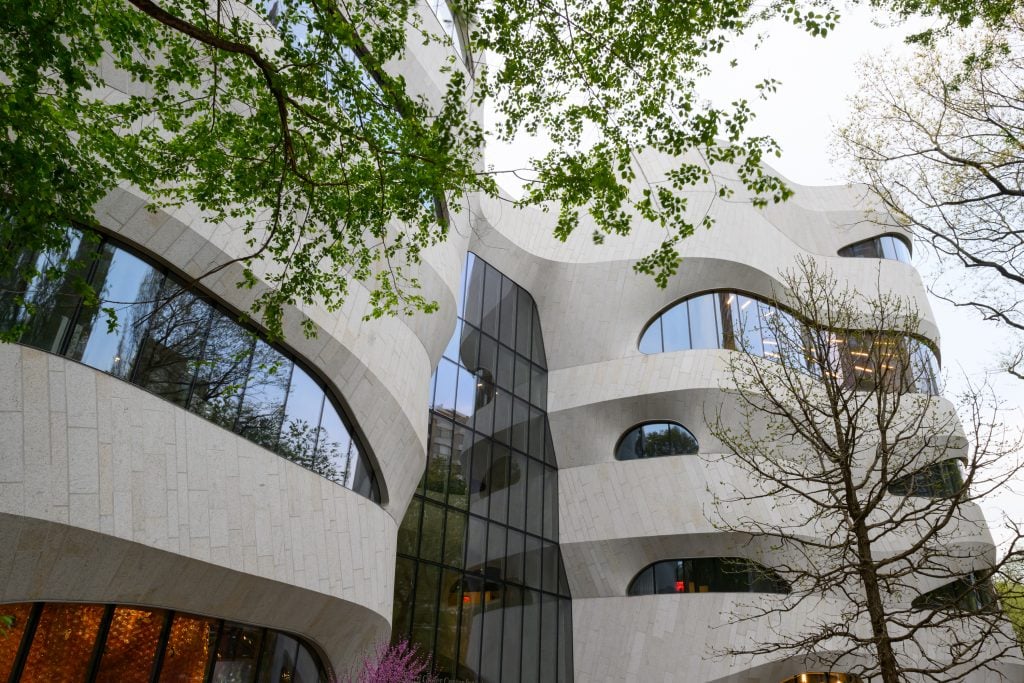
The new Richard Gilder Center for Science, Education, and Innovation at the American Museum of Natural History. Photo by Iwan Baan, courtesy of the American Museum of Natural History, New York.
“The central atrium is almost like it’s been eroded out of a solid block,” project architect Jeanne Gang, head of the international firm Studio Gang, said at the press preview.
Designed to look like a natural cavern, the atrium’s interior is covered with shotcrete, or sprayed concrete, a raw, unpainted finishing applied directly to rebar and metal mesh that “highlights the craft and skill of the people who made it,” Gang added.
(The shotcrete technique is not only visually fitting for an institution known for its fossils. Serendipitously, it was also invented by naturalist and taxidermist Carl Akeley, the man responsible for many of the museum’s famed dioramas.)
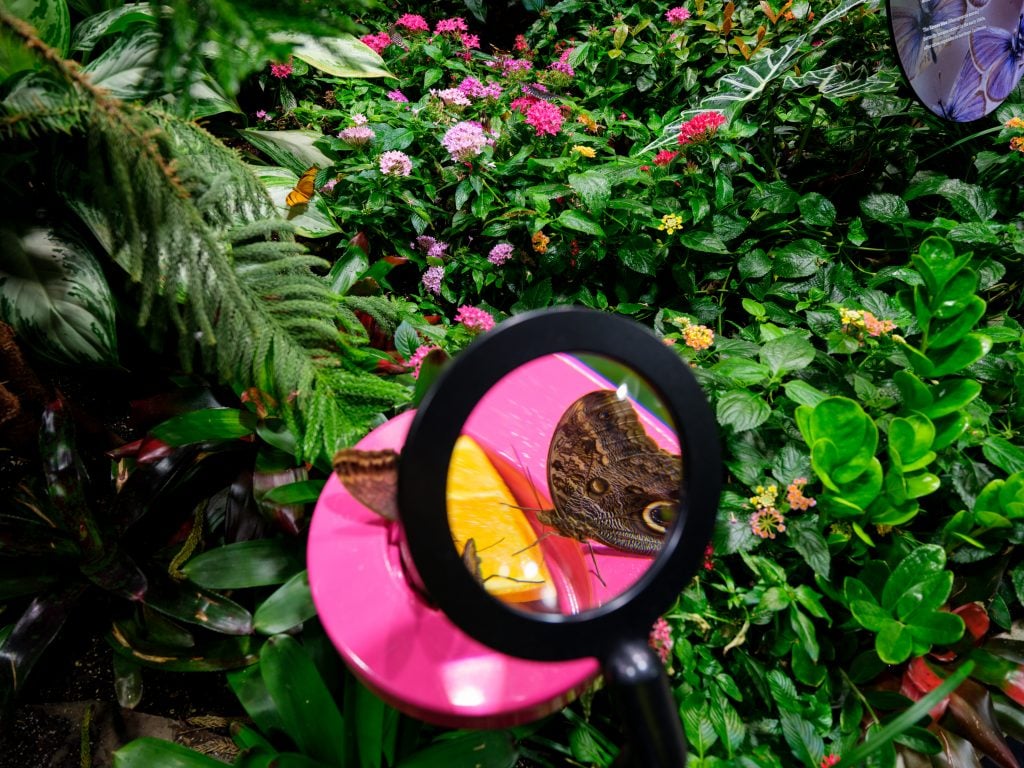
The Butterfly Vivarium at the new Richard Gilder Center for Science, Education, and Innovation at the American Museum of Natural History. Photo by Alvaro Keding, courtesy of the American Museum of Natural History, New York.
Studio Gang has built openings in the walls that offer intriguing glimpses of the different exhibition galleries designed by Ralph Appelbaum Associates, including the “Collections Core,” a multi-story vitrine that runs the height of the atrium and will offer rotating displays of the museum’s 33 million specimens.
“A lot of our old cases were quite difficult to access—they weren’t designed to be opened all the time,” Raxworthy said.
The new facility makes for more flexible exhibitions while also providing new storage for some four million objects—as well as space where scientists can study and learn from these specimens.
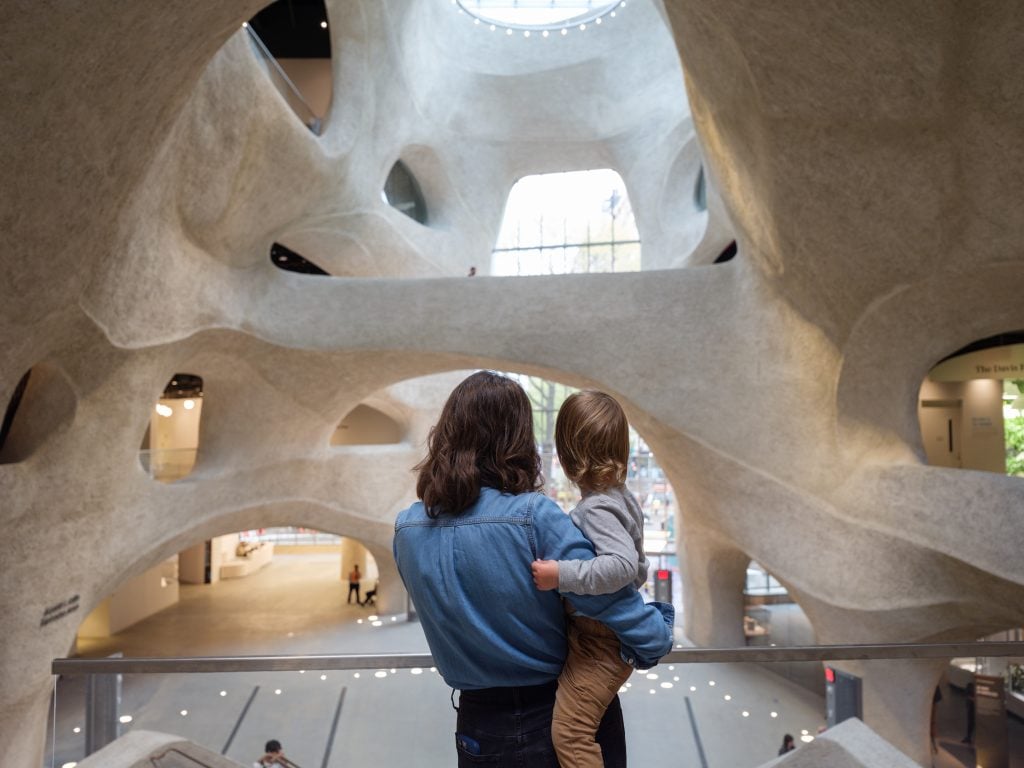
The Exploration Atrium in the new Richard Gilder Center for Science, Education, and Innovation at the American Museum of Natural History. Photo by Alvaro Keding, courtesy of the American Museum of Natural History, New York.
“A lot of our visitors don’t realize we’re actually a research organization with scientists,” Lauri Halderman, the museum’s vice president of exhibitions, said on a tour of the new space. “We have some collections on display that our scientists haven’t researched yet.”
First announced in 2014, the Gilder Center met with some opposition from the community over concerns about the loss of public park land, leading to revised plans from Reed Hilderbrand Landscape Architecture that preserved several trees originally earmarked for removal and added new pathways and seating.
The museum faced a lawsuit that was initially dismissed. After construction broke ground in 2019, there was even a protest led by tennis star Billie Jean King, before the project’s opponents exhausted the appeal process.
When work finally resumed, it seemed to progress with lightning speed, despite the global pandemic that delayed so many projects—as evidenced by a time lapse video of its erection. The expansion will open to the public May 4.
The Gilder Center fulfills the original master plan for the museum—drawn up by architects Calvert Vaux and Jacob Wrey Mould in 1872 and revised by the firm Cady, Berg, and See in 1897—by finally adding a central facade and entrance on the western side of the campus.
To build the Gilder Center, the museum tore down three existing back-of-house buildings that lacked historic or architectural significance. The new building bridges the gap between the Romanesque Revival wing on Columbus Avenue designed by Charles Volz and erected from 1906 to ’08, and the 1931 Power House from Trowbridge and Livingston. (The latter has no public spaces, but the Gilder Center does offer access to the museum’s last major construction project, the Rose Center for Earth and Space along West 81st Street, which opened in 2000.)
With its completion, the museum—which turned 150 in 2019—is looking ahead to the future, and continuing its interdisciplinary work inspiring the next generation of scientists and innovators.
See more photos of the new Gilder Center below.
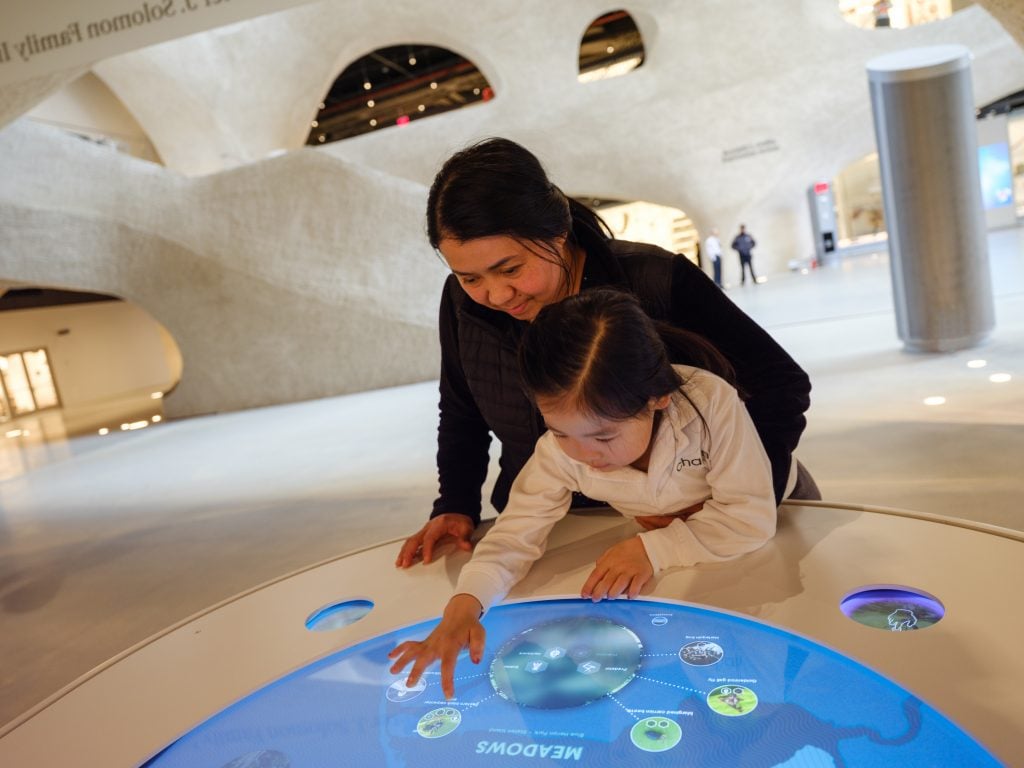
The Insectarium in the new Richard Gilder Center for Science, Education, and Innovation at the American Museum of Natural History. Photo by Alvaro Keding, courtesy of the American Museum of Natural History, New York.
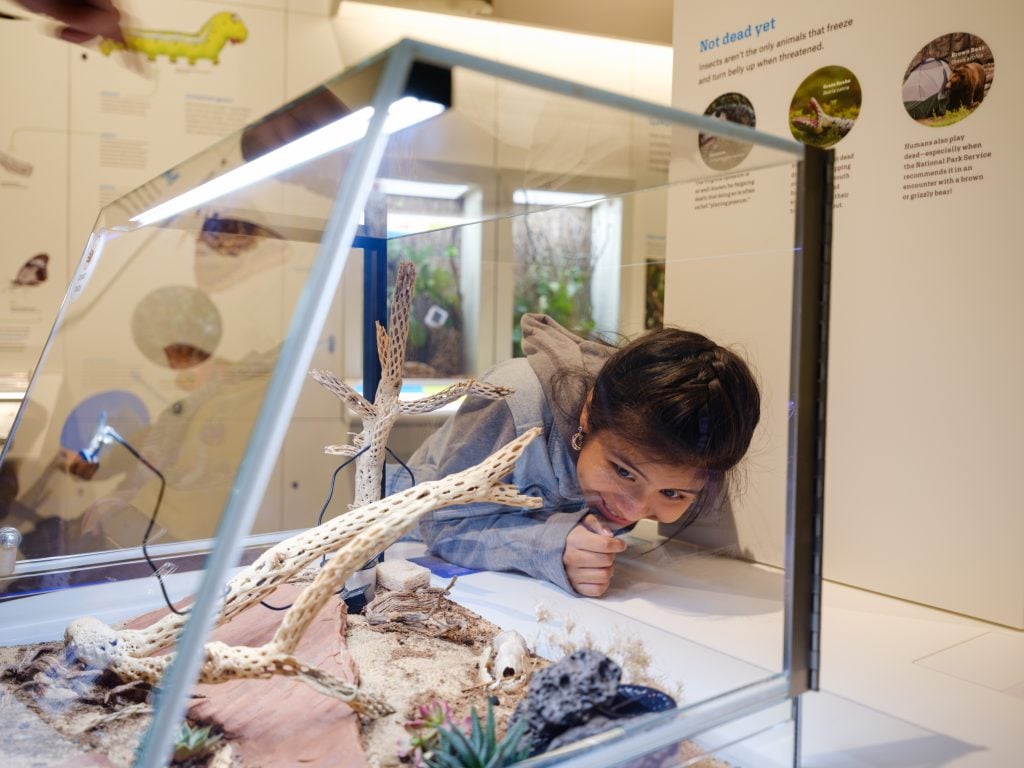
The Insectarium in the new Richard Gilder Center for Science, Education, and Innovation at the American Museum of Natural History. Photo by Alvaro Keding, courtesy of the American Museum of Natural History, New York.
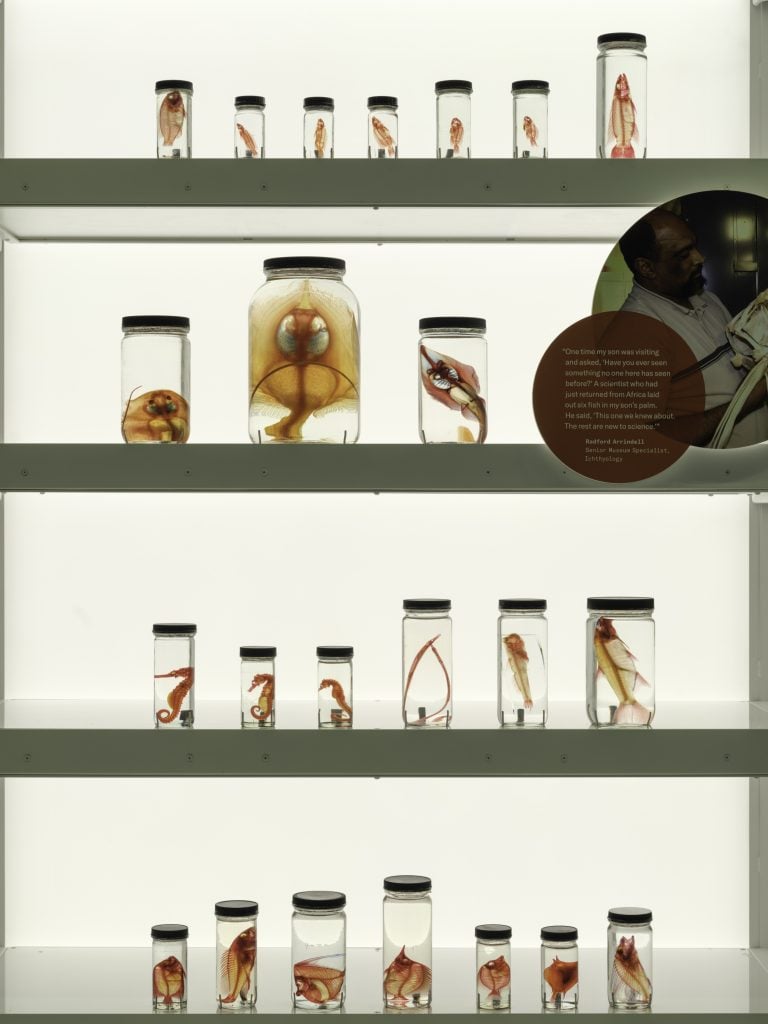
The Collections Core in the new Richard Gilder Center for Science, Education, and Innovation at the American Museum of Natural History. Photo by Alvaro Keding, courtesy of the American Museum of Natural History, New York.

The Collections Core in the new Richard Gilder Center for Science, Education, and Innovation at the American Museum of Natural History. Photo by Alvaro Keding, courtesy of the American Museum of Natural History, New York.
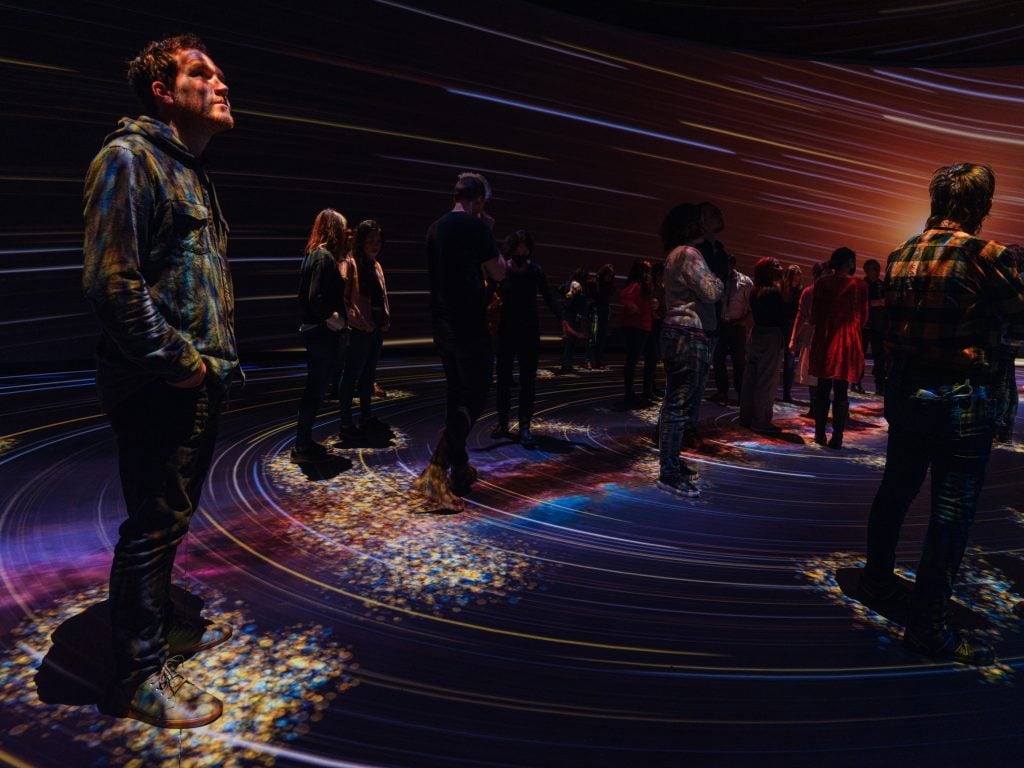
“Invisible Worlds” at the new Richard Gilder Center for Science, Education, and Innovation at the American Museum of Natural History. Photo by Alvaro Keding, courtesy of the American Museum of Natural History, New York.
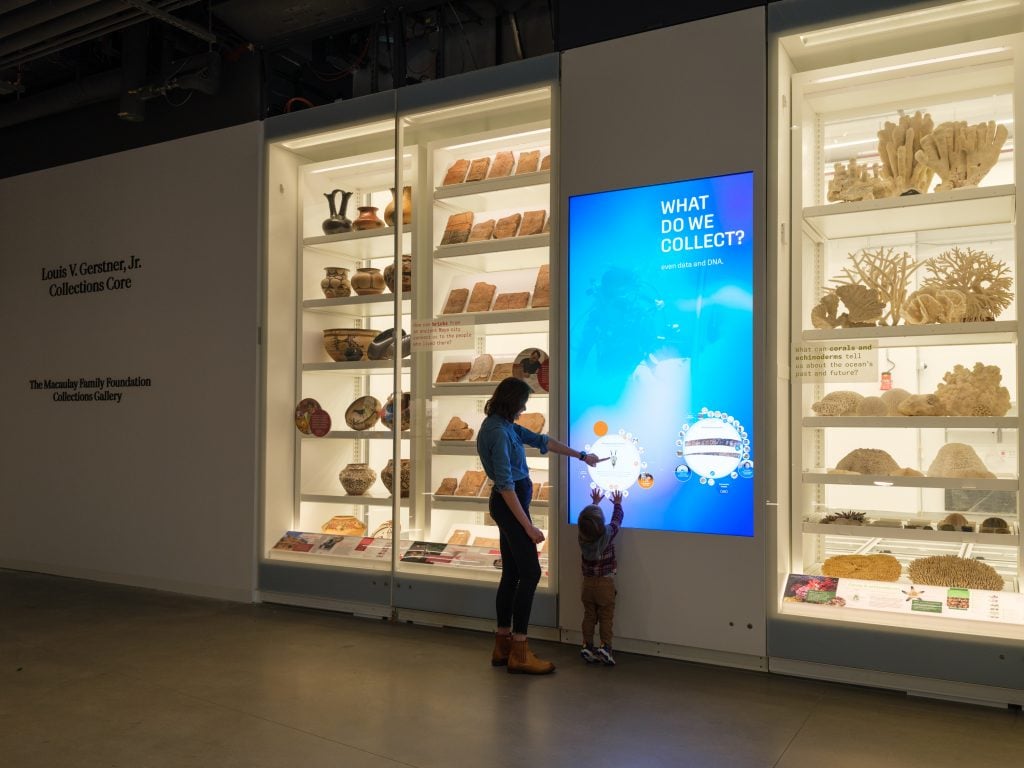
The Collections Core in the new Richard Gilder Center for Science, Education, and Innovation at the American Museum of Natural History. Photo by Alvaro Keding, courtesy of the American Museum of Natural History, New York.
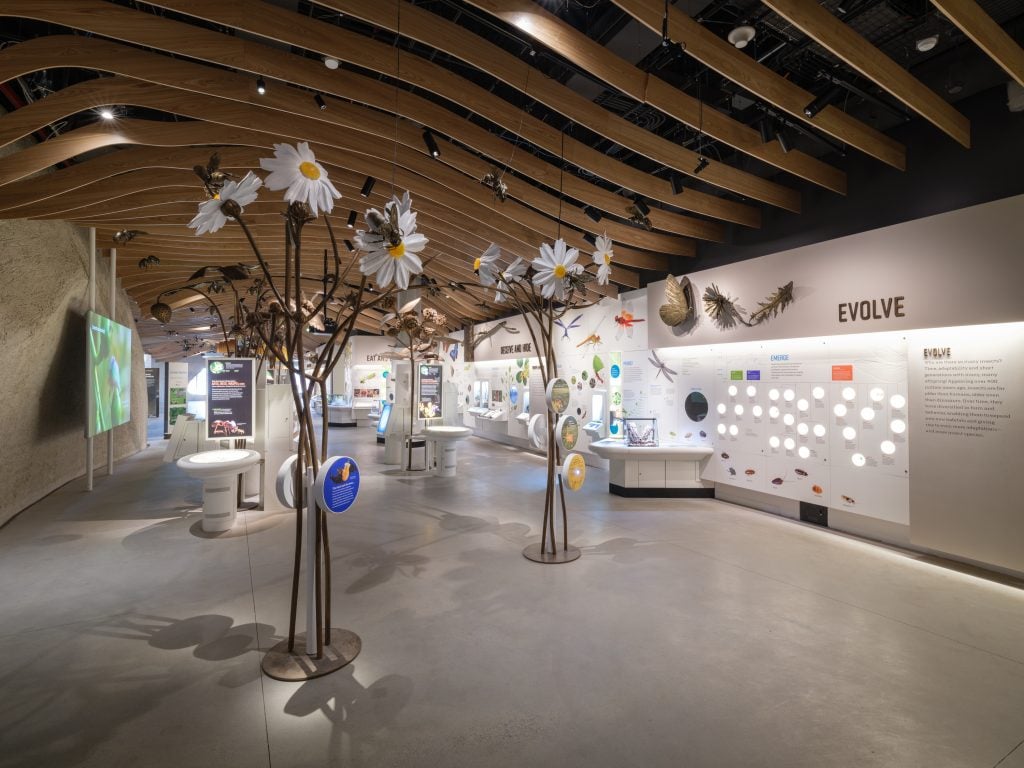
The Insectarium in the new Richard Gilder Center for Science, Education, and Innovation at the American Museum of Natural History. Photo by Alvaro Keding, courtesy of the American Museum of Natural History, New York.
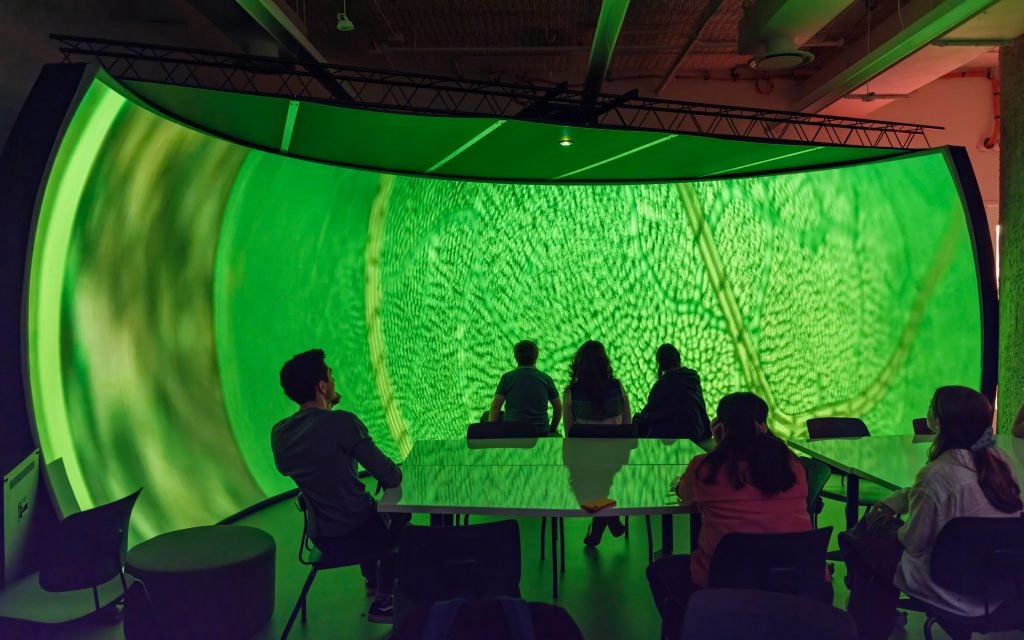
The Learning Labs classrooms in the new Richard Gilder Center for Science, Education, and Innovation at the American Museum of Natural History. Photo by Alvaro Keding, courtesy of the American Museum of Natural History, New York.
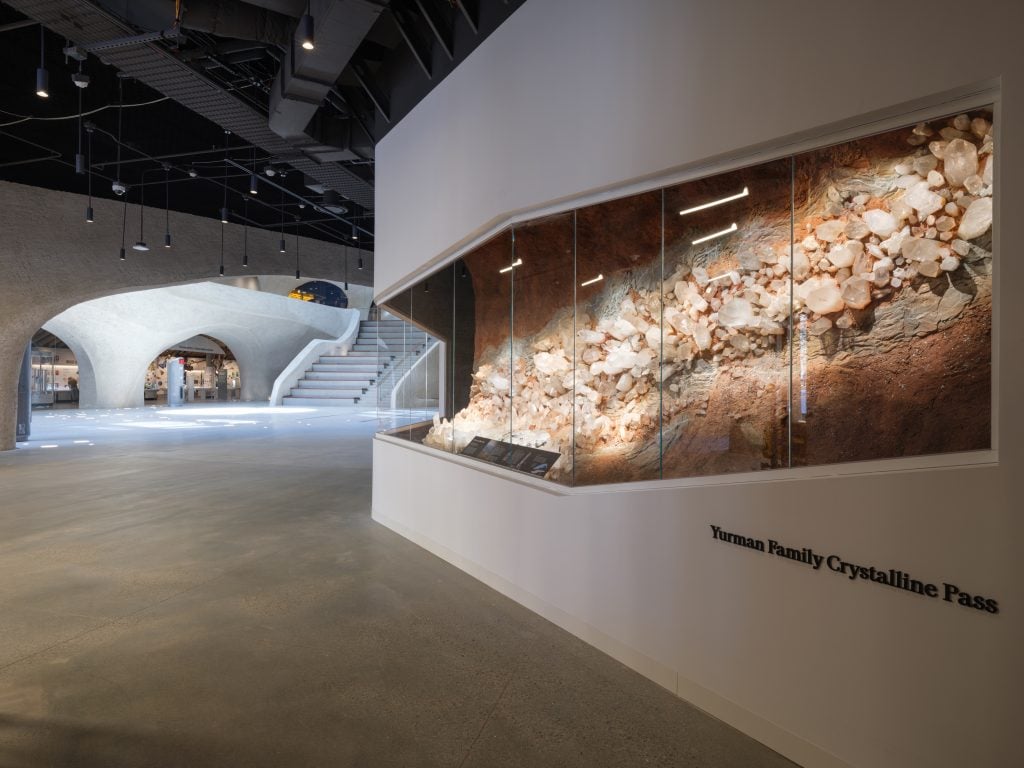
The Yurman Family Crystalline Pass, a 19-foot-long re-creation of a remarkable rock crystal vein in the Oachita Mountains of Arkansas, connects the new Richard Gilder Center for Science, Education, and Innovation’s Exploration Atrium to the Halls of Gems and Minerals. Photo by Alvaro Keding, courtesy of the American Museum of Natural History, New York.
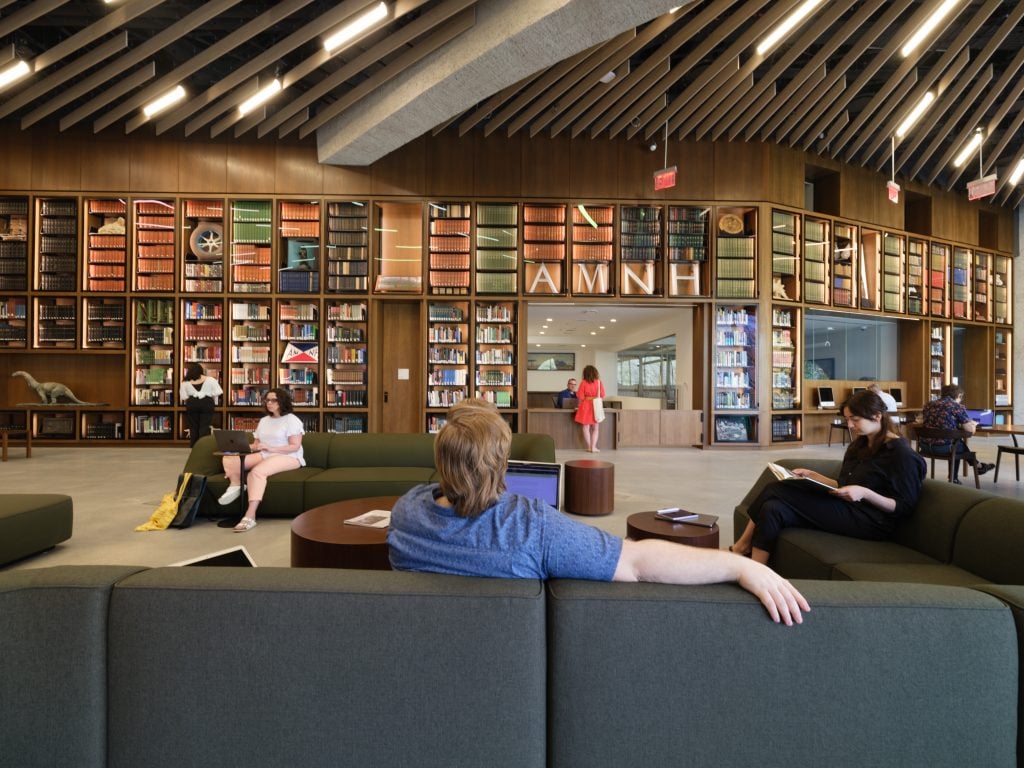
The research library in the new Richard Gilder Center for Science, Education, and Innovation at the American Museum of Natural History. Photo by Alvaro Keding, courtesy of the American Museum of Natural History, New York.
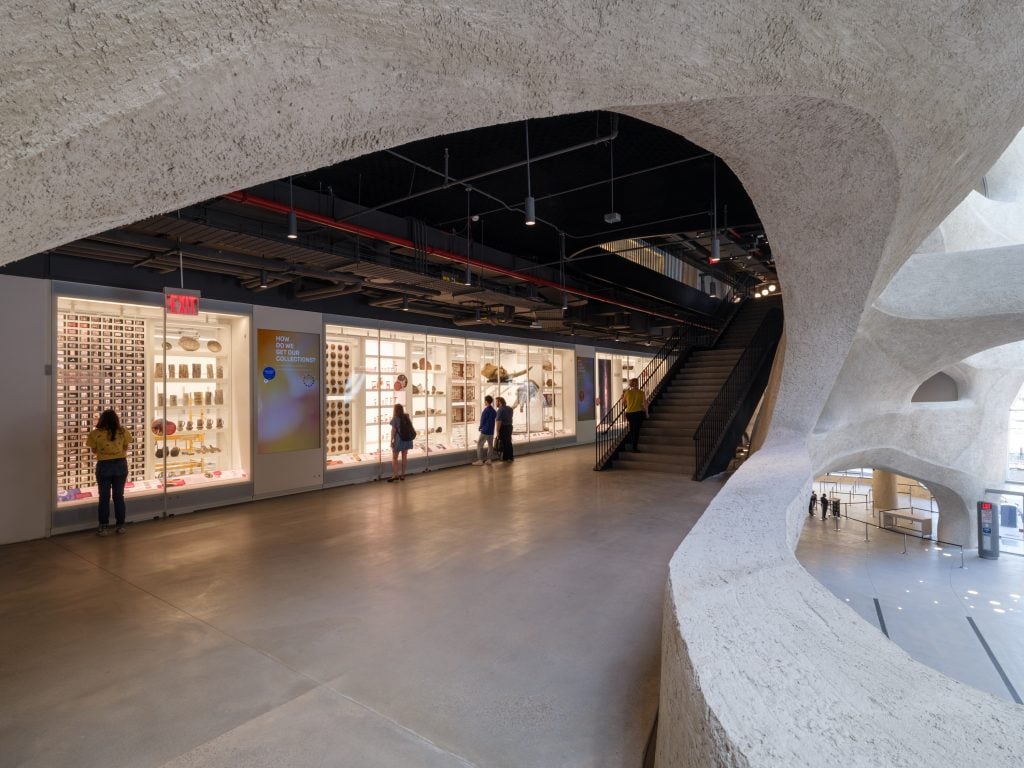
The Collections Core in the new Richard Gilder Center for Science, Education, and Innovation at the American Museum of Natural History. Photo by Alvaro Keding, courtesy of the American Museum of Natural History, New York.
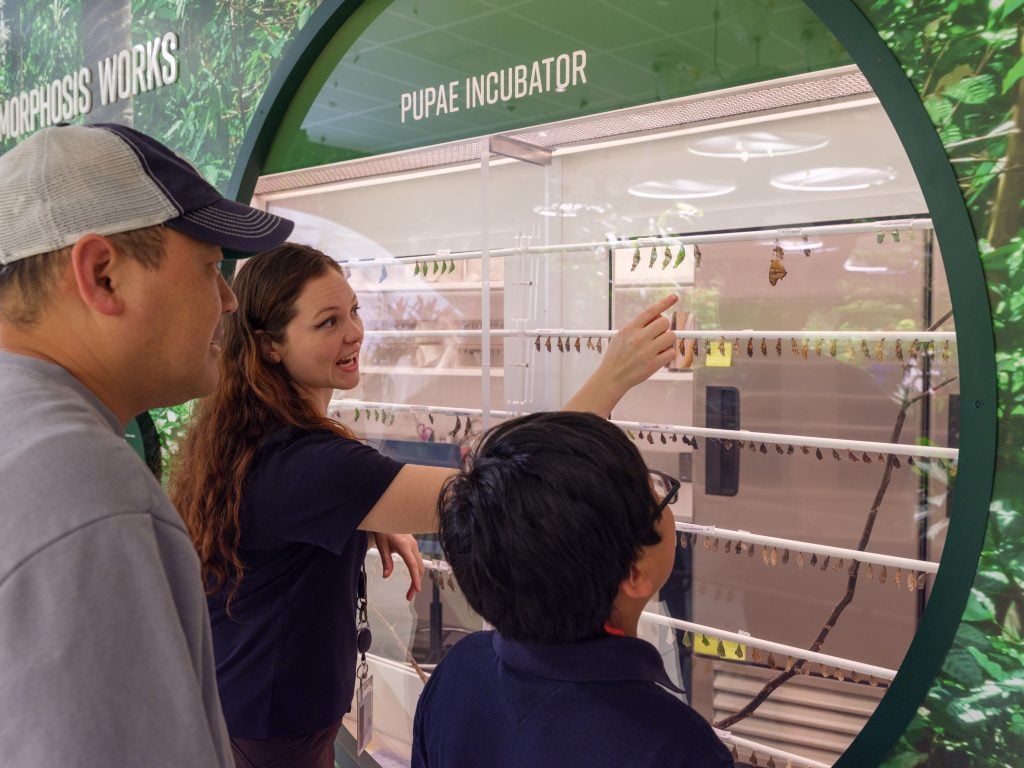
The Butterfly Vivarium’s pupae incubator at the new Richard Gilder Center for Science, Education, and Innovation at the American Museum of Natural History. Photo by Alvaro Keding, courtesy of the American Museum of Natural History, New York.
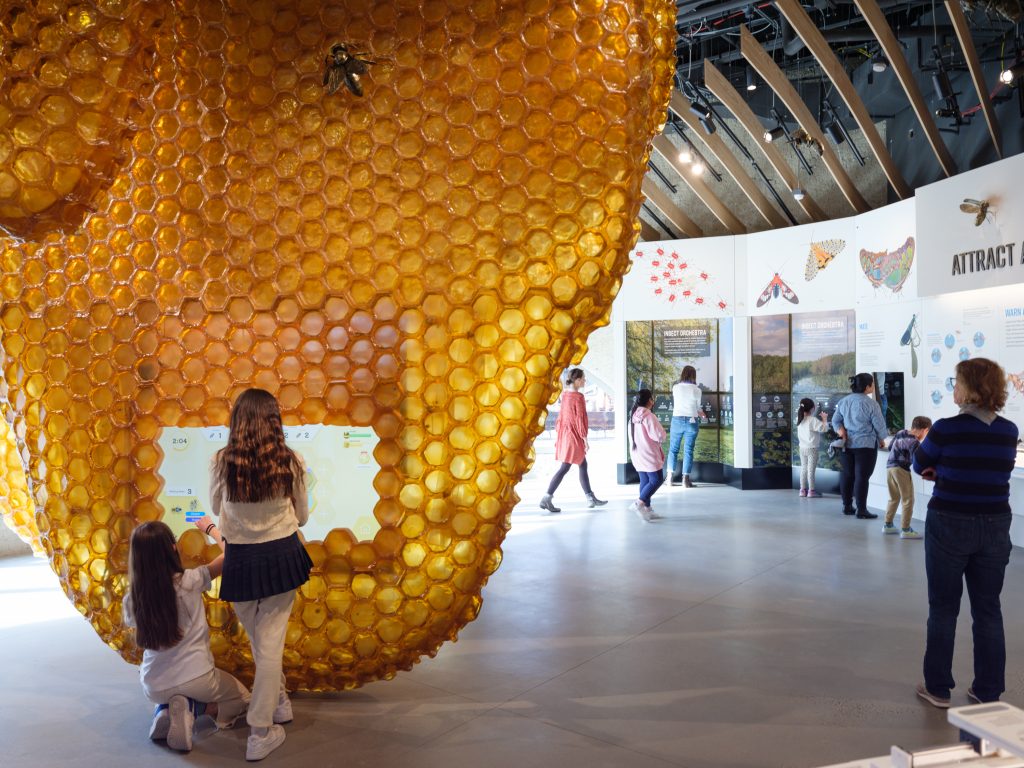
The Insectarium at the new Richard Gilder Center for Science, Education, and Innovation at the American Museum of Natural History. Photo by Alvaro Keding, courtesy of the American Museum of Natural History, New York.

The research library in the new Richard Gilder Center for Science, Education, and Innovation at the American Museum of Natural History. Photo by Alvaro Keding, courtesy of the American Museum of Natural History, New York.
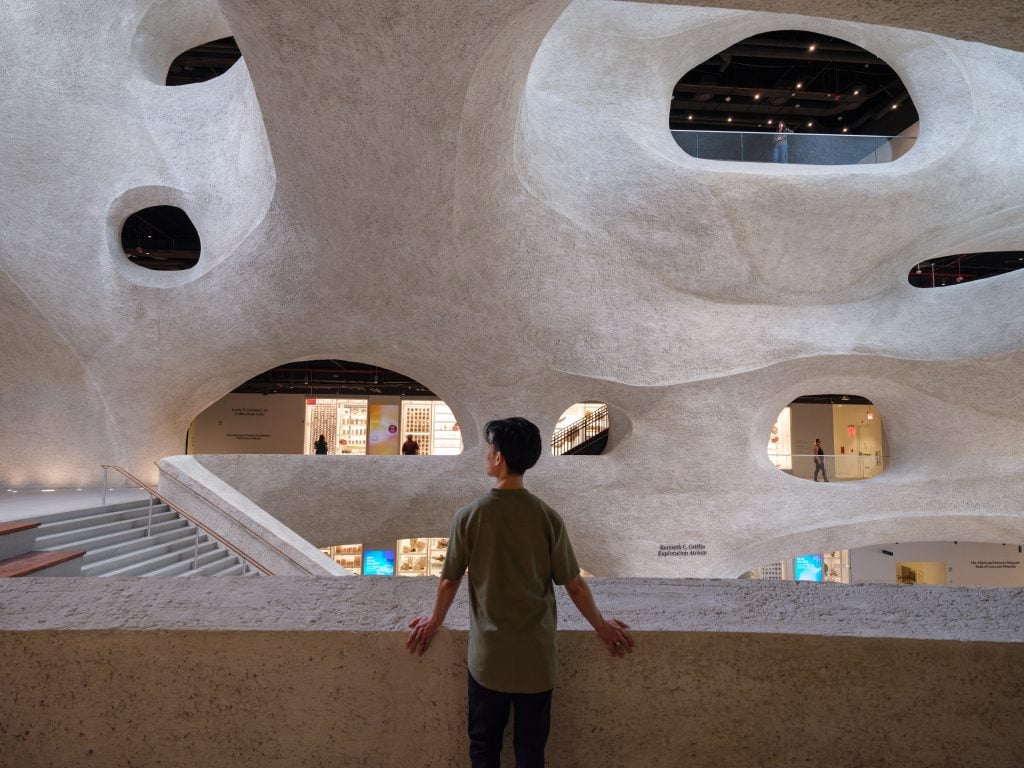
The new Richard Gilder Center for Science, Education, and Innovation at the American Museum of Natural History. Photo by Iwan Baan, courtesy of the American Museum of Natural History, New York.
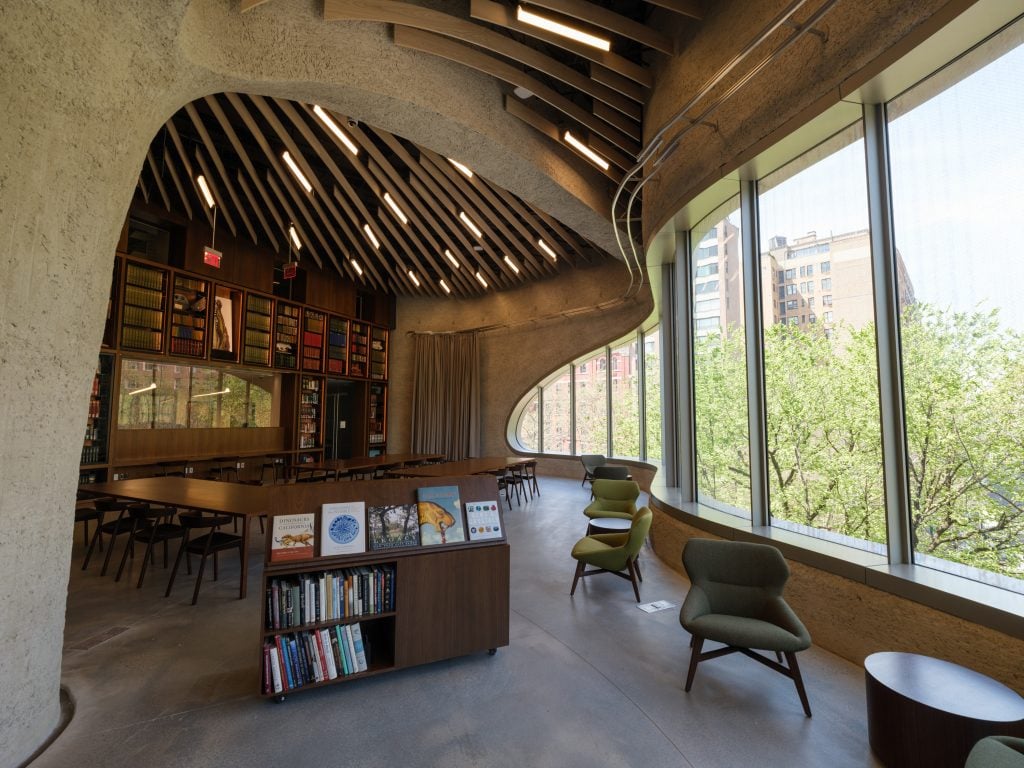
The research library in the new Richard Gilder Center for Science, Education, and Innovation at the American Museum of Natural History. Photo by Alvaro Keding, courtesy of the American Museum of Natural History, New York.

The Butterfly Vivarium at the new Richard Gilder Center for Science, Education, and Innovation at the American Museum of Natural History. Photo by Dennis Finnin, courtesy of the American Museum of Natural History, New York.
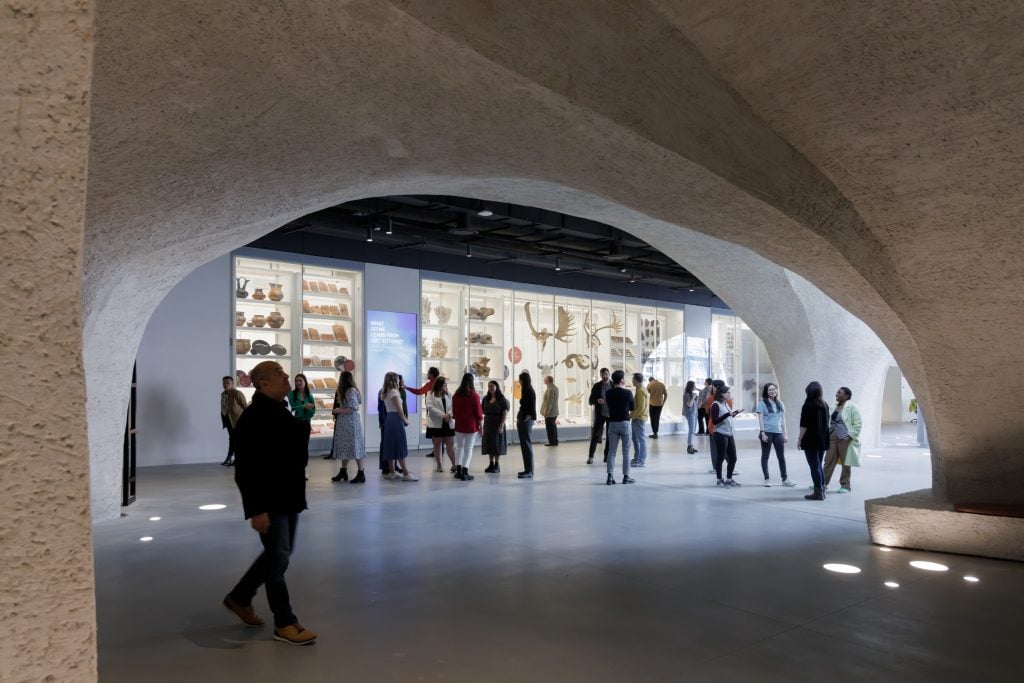
The Collections Core in the new Richard Gilder Center for Science, Education, and Innovation at the American Museum of Natural History. Photo by Alvaro Keding, courtesy of the American Museum of Natural History, New York.
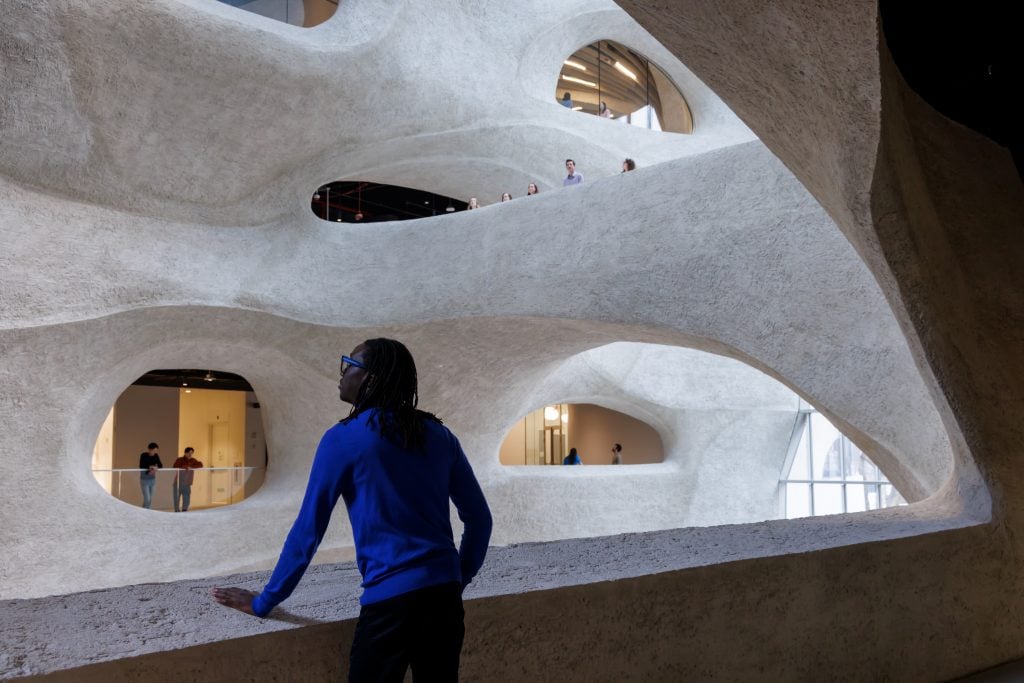
Apertures throughout the Richard Gilder Center for Science, Education, and Innovation create inviting views and offer alluring sightlines to visitors. From this vantage point outside of the Davis Family Butterfly Vivarium on the second floor, visitors can look out over the Kenneth C. Griffin Exploration Atrium, watch others walk across the third-floor bridge to the Invisible Worlds immersive experience, and glimpse the David S. and Ruth L. Gottesman Research Library and Learning Center on the fourth floor.
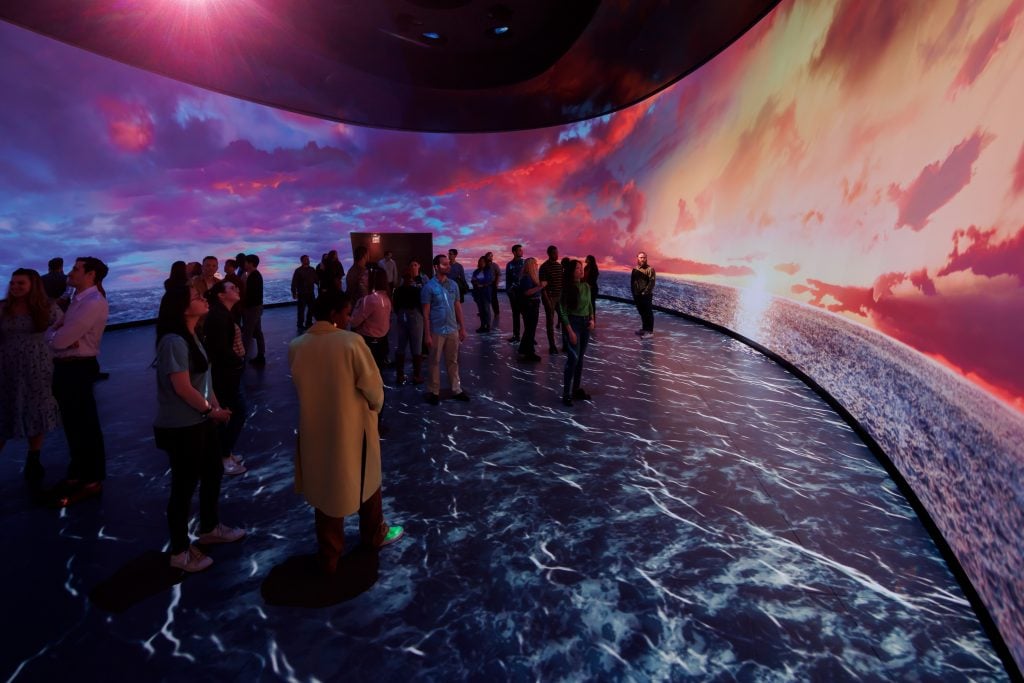
“Invisible Worlds” at the new Richard Gilder Center for Science, Education, and Innovation at the American Museum of Natural History. Photo by Alvaro Keding, courtesy of the American Museum of Natural History, New York.
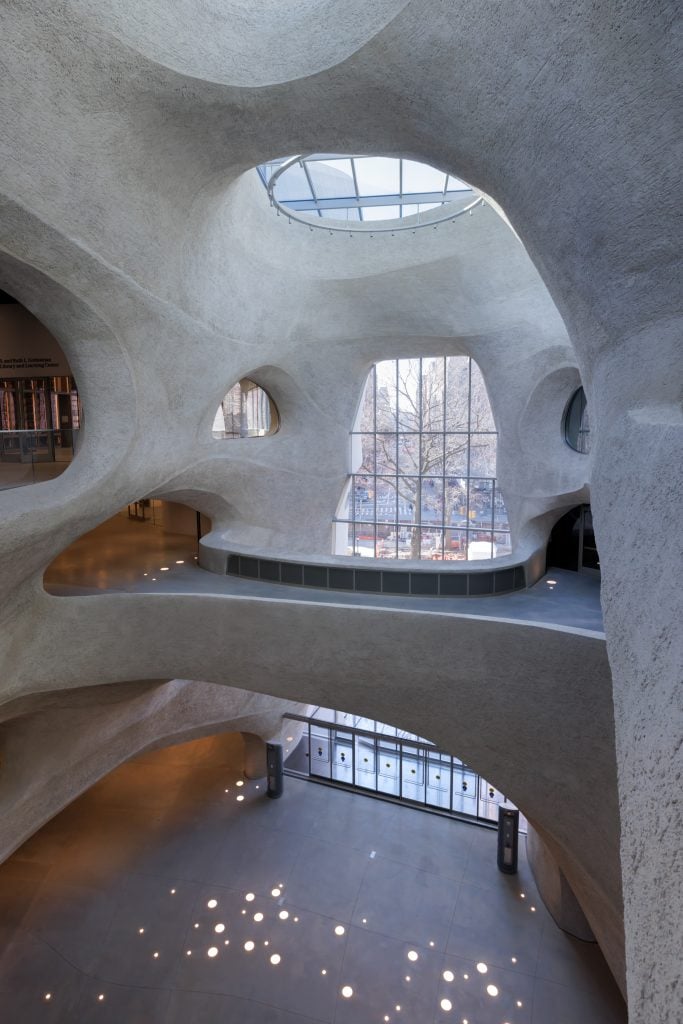
The new Richard Gilder Center for Science, Education, and Innovation at the American Museum of Natural History. Photo by Iwan Baan, courtesy of the American Museum of Natural History, New York.
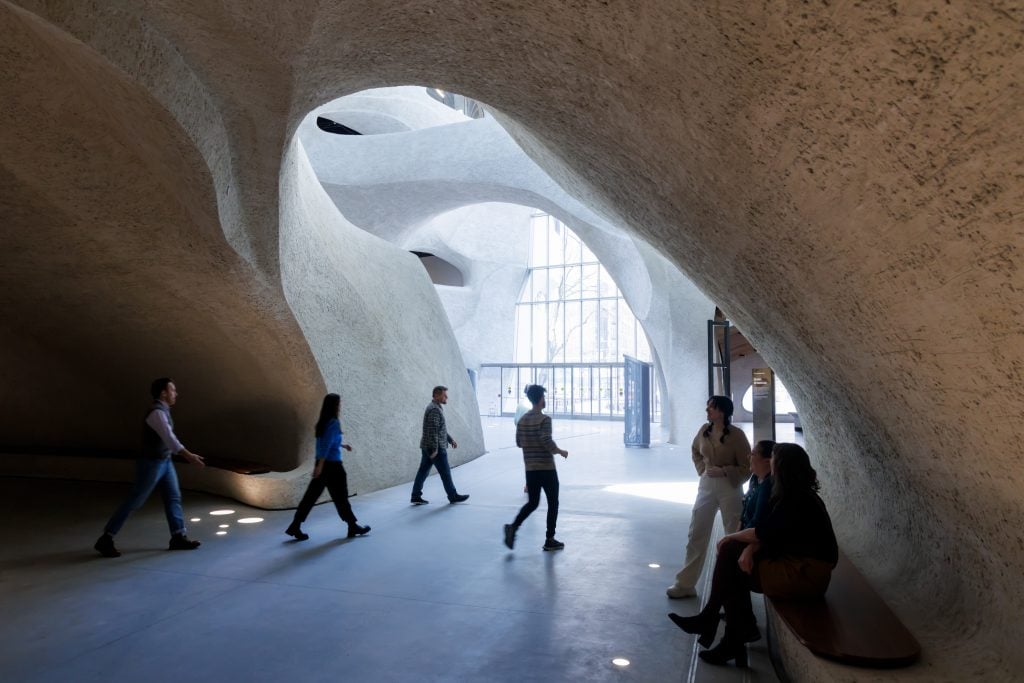
The new Richard Gilder Center for Science, Education, and Innovation at the American Museum of Natural History. Photo by Iwan Baan, courtesy of the American Museum of Natural History, New York.
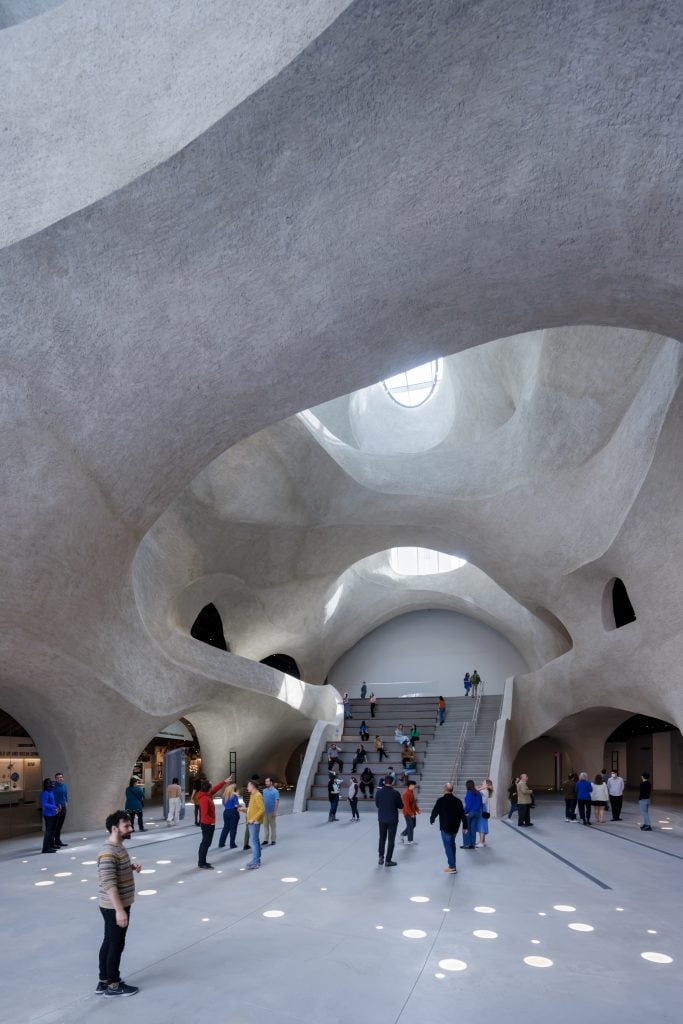
The new Richard Gilder Center for Science, Education, and Innovation at the American Museum of Natural History. Photo by Iwan Baan, courtesy of the American Museum of Natural History, New York.
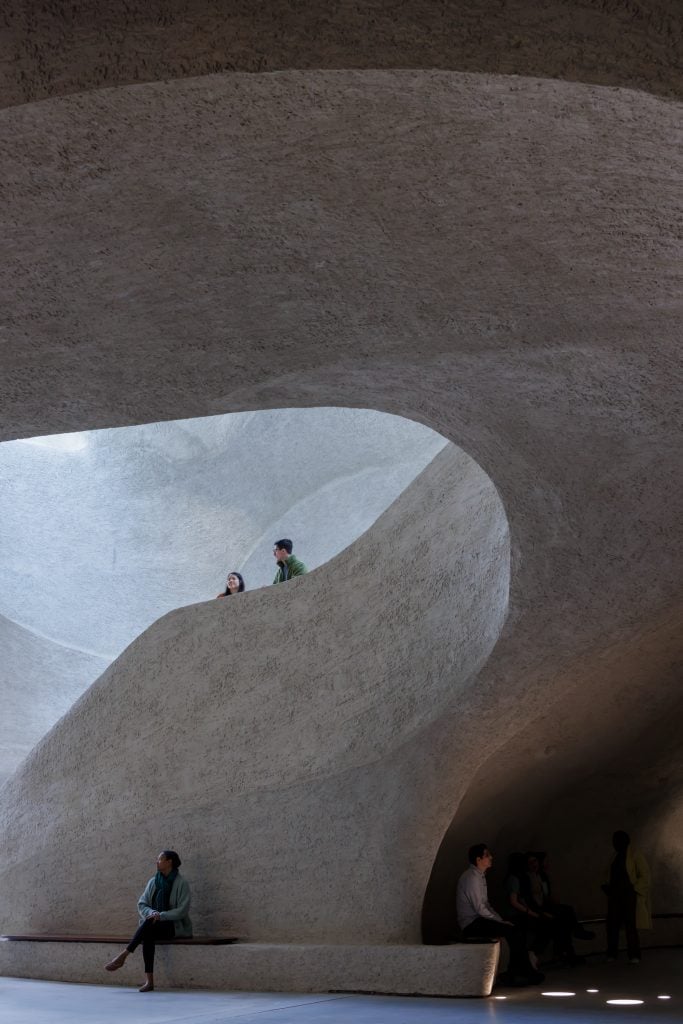
The new Richard Gilder Center for Science, Education, and Innovation at the American Museum of Natural History. Photo by Iwan Baan, courtesy of the American Museum of Natural History, New York.
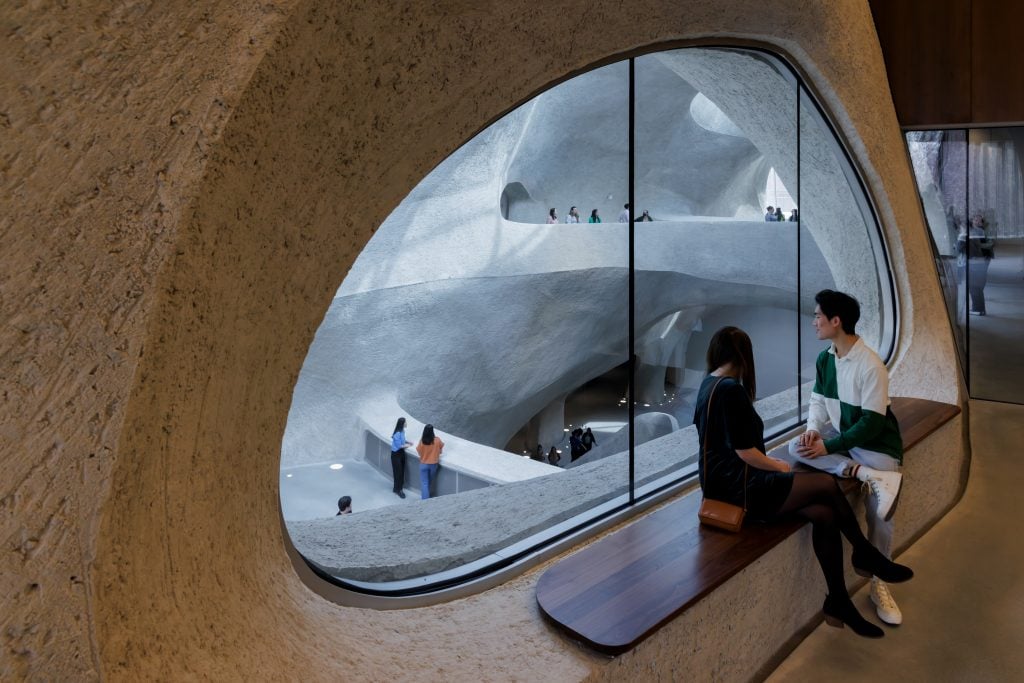
The new Richard Gilder Center for Science, Education, and Innovation at the American Museum of Natural History. Photo by Iwan Baan, courtesy of the American Museum of Natural History, New York.

The new Richard Gilder Center for Science, Education, and Innovation at the American Museum of Natural History. Photo by Iwan Baan, courtesy of the American Museum of Natural History, New York.
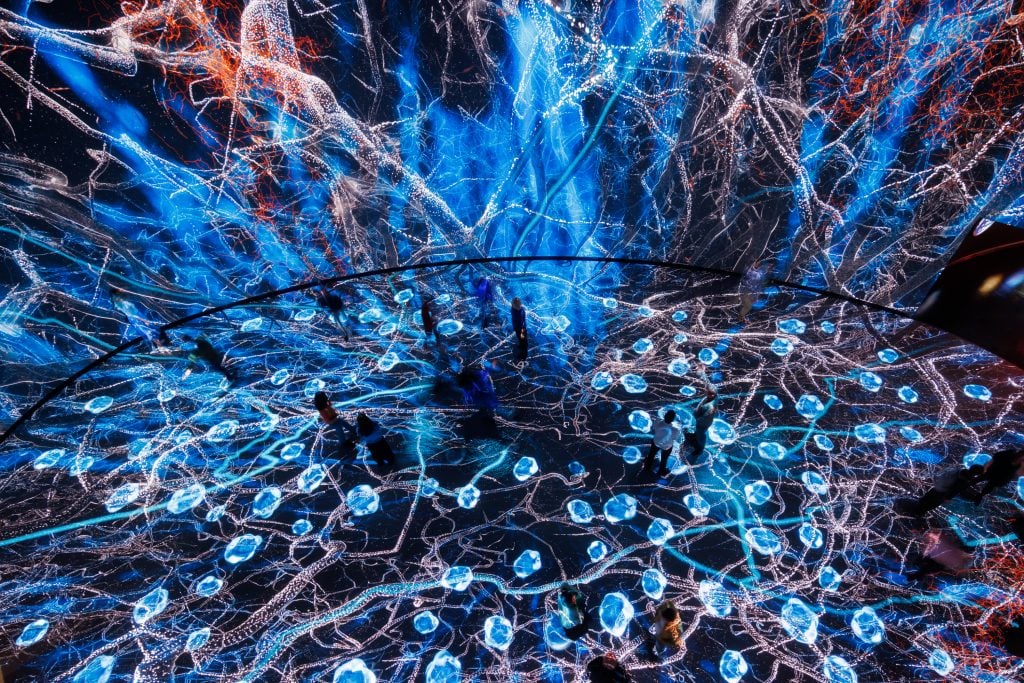
“Invisible Worlds” at the new Richard Gilder Center for Science, Education, and Innovation at the American Museum of Natural History. Photo by Alvaro Keding, courtesy of the American Museum of Natural History, New York.
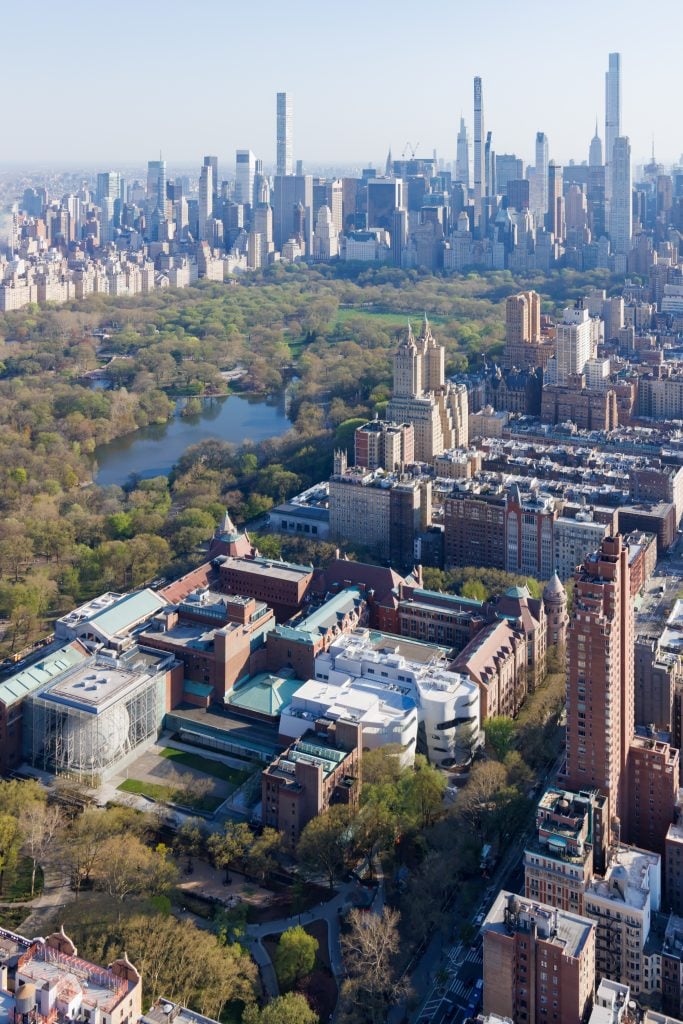
The new Richard Gilder Center for Science, Education, and Innovation and the rest of the American Museum of Natural History campus. Photo by Iwan Baan, courtesy of the American Museum of Natural History, New York.
Follow Artnet News on Facebook:
Want to stay ahead of the art world? Subscribe to our newsletter to get the breaking news, eye-opening interviews, and incisive critical takes that drive the conversation forward.







